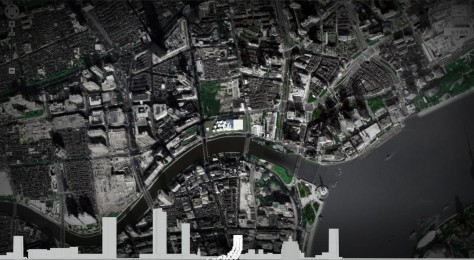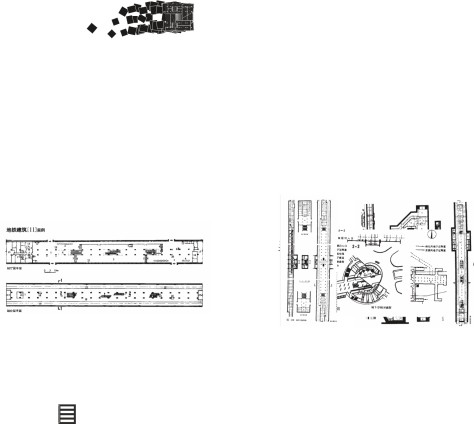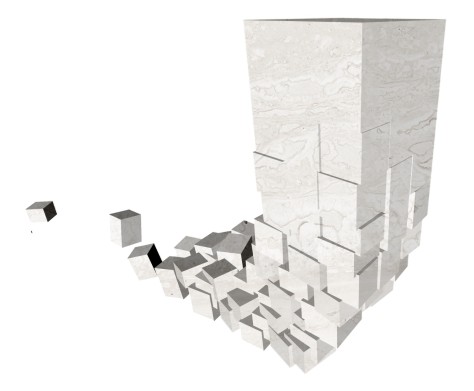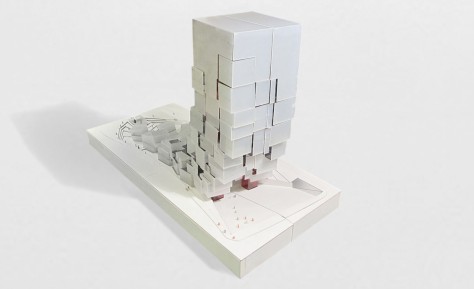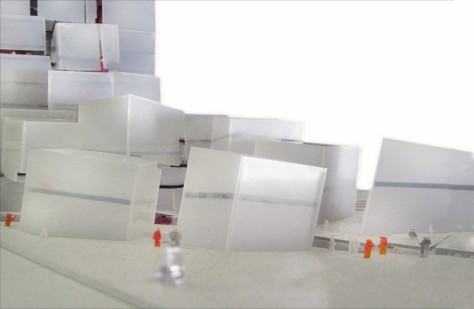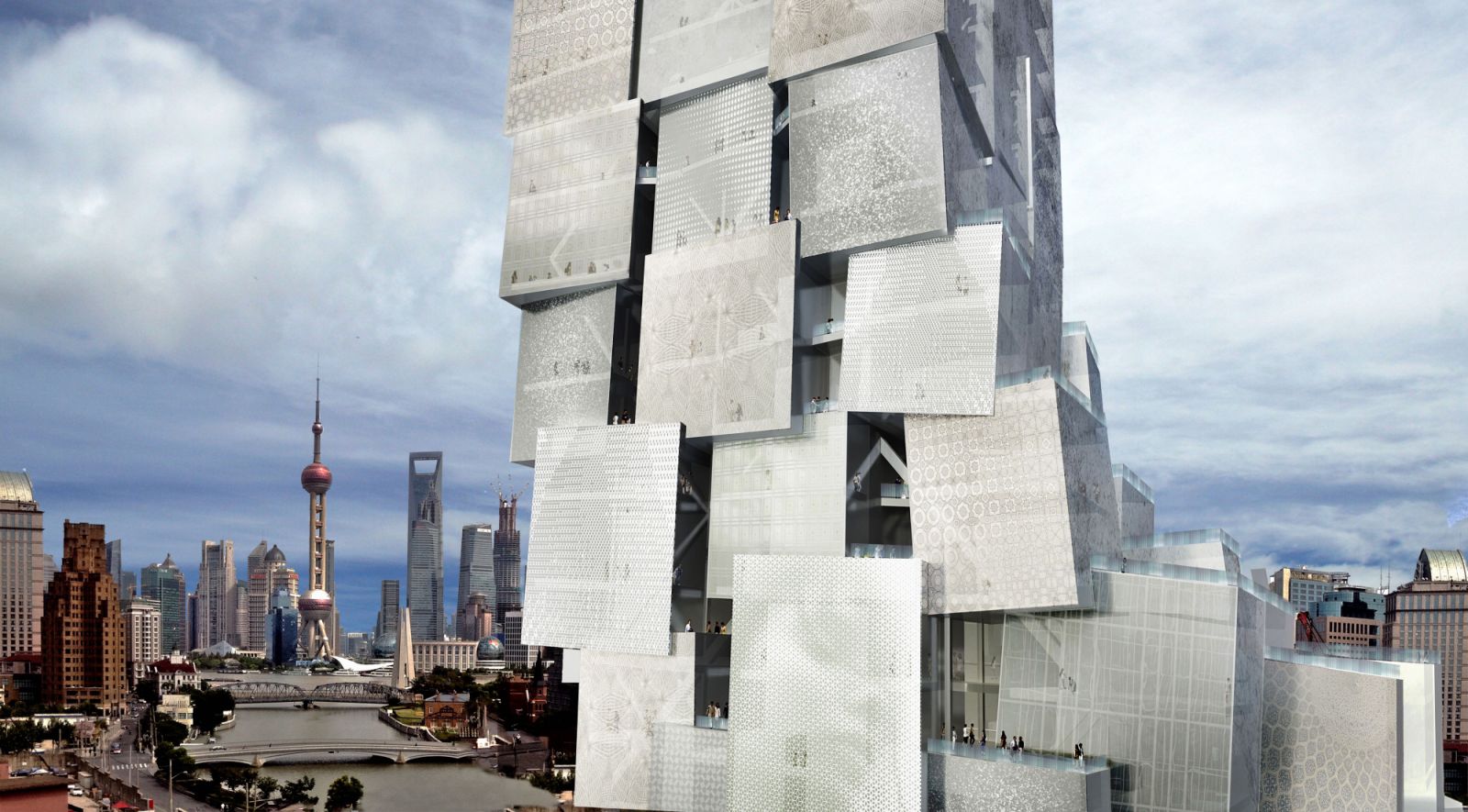
Shaped as an Aggregative Tower, the study for ABC Art Bund Center in Shanghai encloses a network of relationship between spaces, paths and scales. The building arranges multiple programs in a sequence of open spaces, sloping paths and floors that together form a continuous exploration of the possibility of the space.
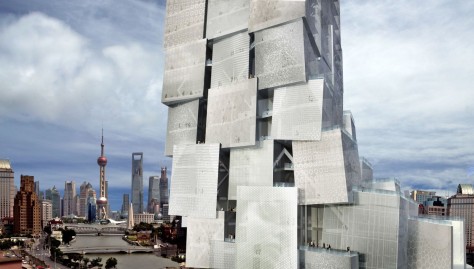
The building includes art district, ateliers, museums, workshops, academy, exhibition spaces, performance halls, libraries, leisure spaces, bookshops, covered and open-air squares connected with the underground system. The building is shaped using basic relationship between space, scale and path:

Void
The square is an empty space full of potential activities, as a space that can be accessed from all direction. In this system anything can happen, as on a stage without scenery, exposed and full of potential, challenging the old method of assign strictly defined functions to the space.
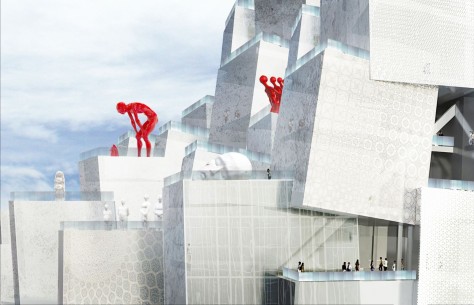
Isolation
Single elements inside the empty space shape the paths and direct the crowd toward the inside of the tower. The underground space is connected to the outside with both physical and visual connection. As reflection of the outside, the underground is shaped using the continuity of the external elements inward, reversing the logic of the element in an empty place inside.

Integration
Higher grade of complexity is the result of the junction, an overlapping composition finalized to evolve its use, where the influences melt and generate integration between elements. In this condition, the un-clear composition is filled with possibilities and attractive complex structure, continuing the exploration inside.
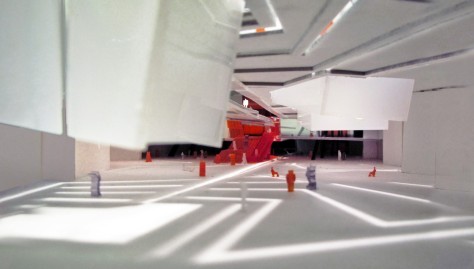
Evolving
The generated space, surrounded by frames, physical and immaterial barriers represent the spatial bubbles that delimit small realities and creating a small-scale bigness. This is translated into creation of human-scale spaces, connected to create a sense of unity.
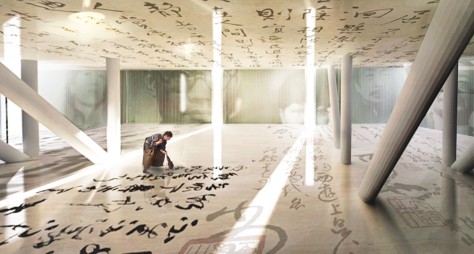
Cavity
The center is an empty void defined by floor-to-floor ramps and stairs along the perimeter inside, creating connection between levels. Two main vertical connections start from the ground to connect the levels and support the structure in the internal and external void. The elements compress the space inside and the ramps define the continuity of the path without interruptions, enhancing interrelation between spaces with diagonal slab, free plans and creating a continuous exchange between programs, and increasing physical and visual connections, exploring series of new relations.

Absolute space
The union of many small situations gives the bigness and the last evolution of the space is the return to single element and the repetition of a defined and regular shape that multiplies and repeats the same type of space. The design, is abstracting from any substance, bringing a picture of evanescence. Source by TCA Think Tank.

Location: Shanghai, China
Architects: TCA Think Tank
Project Team: Pier Alessio Rizzardi, Zhang Hankun
Design consultant: Joseph di Pasquale
Structural consultant: Francesco Iorio
Area: 92 500 sqm
Year: 2013
Images: Courtesy of TCA Think Tank
